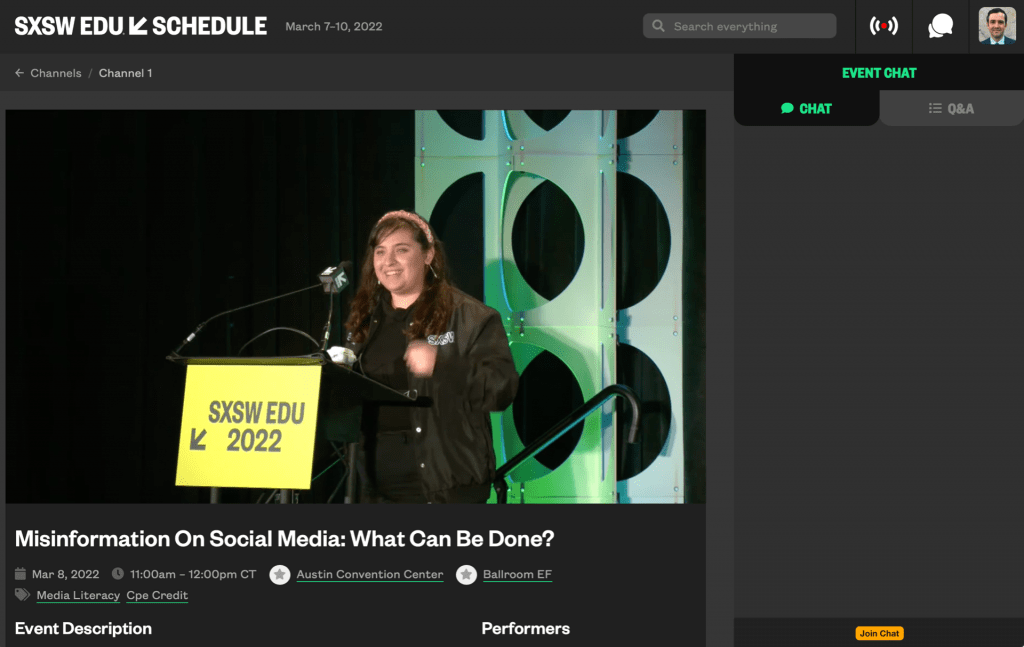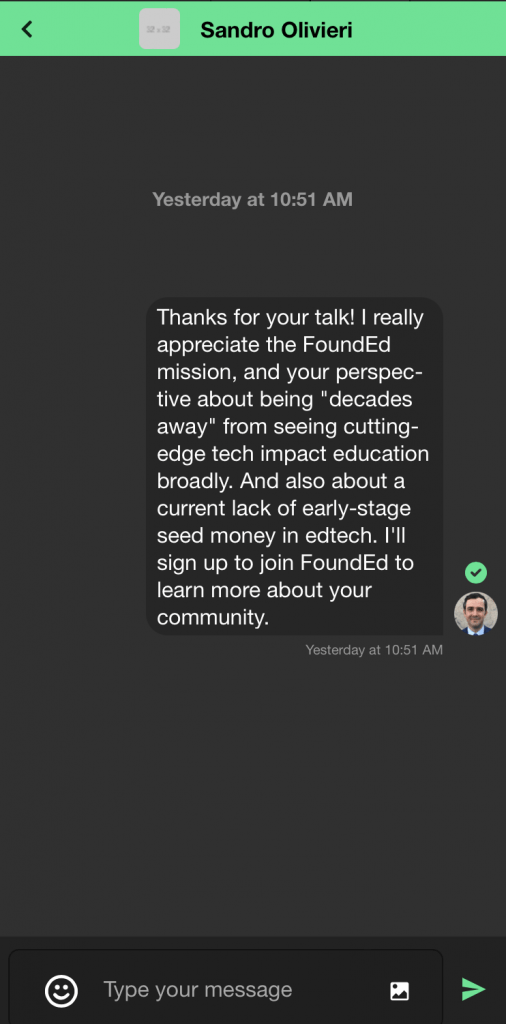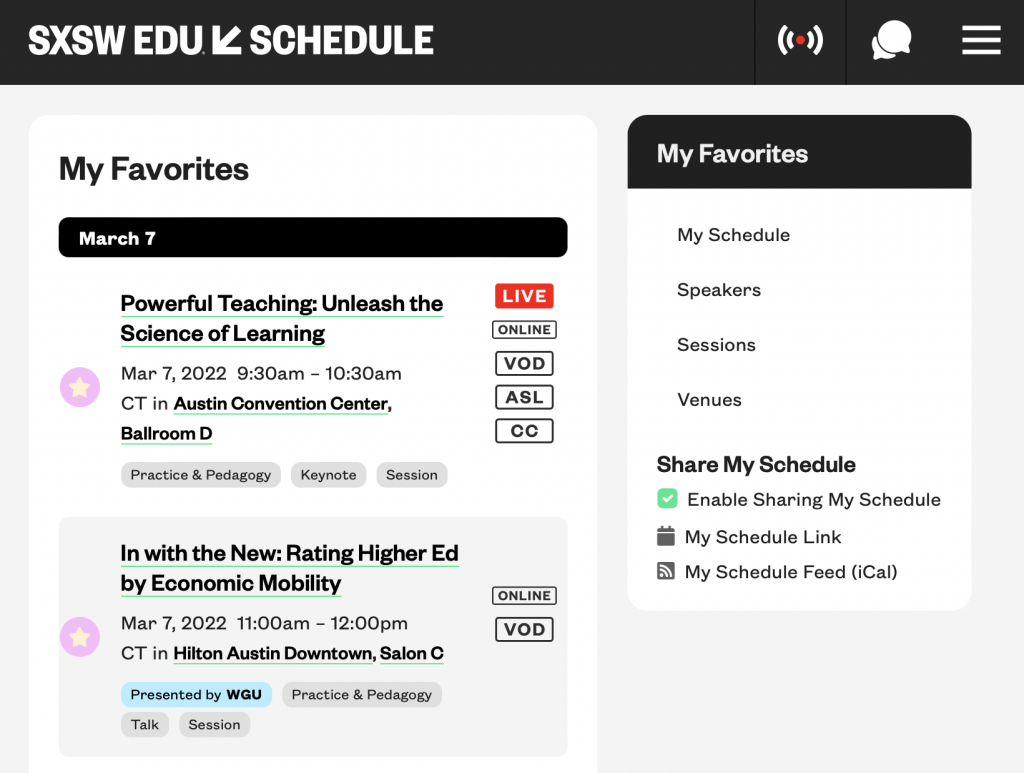I had the good fortune of virtually attending SXSW EDU events this week, including sessions on lessons learned from pandemic education, the hybrid university, the science of learning, and accessibility & inclusion. All of these areas touch on the value and possibility of instructional multimedia.

The Live Stream
One of the more interesting aspects of attending the conference online was seeing how they used their website(s) to organize, broadcast, and network content. And in what ways they failed.
The image above shows the web-based “channel” view of the conference, and I understand they also published live video and VOD (“videos on demand”) to TV apps (e.g. Amazon Fire, Roku, Apple TV, etc).
Online, they dedicated space on the right for “Chat” and “Q&A,” although in the 6 live sessions I attended, there was not much interaction. In fact, it was mostly used as a space to bring technical issues to the attention of the event staff (and I am certainly guilty of this!), such as:
- – Looping ads and schedule issues (running late?)
- – No or low audio.
Despite there being ample SXSW website presence, there was no other “channel” for solving these problems. Other attendees reported no response form the virtual Helpdesk.
Virtual Networking
Crickets. A total dud. For most of the week, the “Social Networking” link on any event brought you to a centralized networking website with a searchable A-Z directory. The plug-in that tied this app into the video platform was evidently broken until the last day of the conference. But it’s hard to know if it was used. Here’s an effort I made to say hi to a presenter:

No response.
The Schedule
Overall I found the web experience confusing, with an unclear relationship between the pre-event website and the paid/login-only “SXSW EDU SCHEDULE” platform. However, the web-based tool to create my own conference schedule by “favoriting” sessions was helpful, as it became my go-to starting point each day.
Each event was coded (see below), but it was not always clear how or when a session would be accessible via video (or not):

I still am not sure what “online” means, because nothing about a session with only that code was online except the description. And it was not clear when “VOD” sessions would be made available, or for how long.
Final Thoughts
While claims of “moonshots” and “radical transformations” abounded, the main takeaway from many sessions was that the COVID-19 pandemic caused educators to use increasingly mixed modalities to support student learning outcomes, and that this was a good thing. As a recent meta-analysis shows, adding video elements to any kind of course can enhance learning outcomes.
